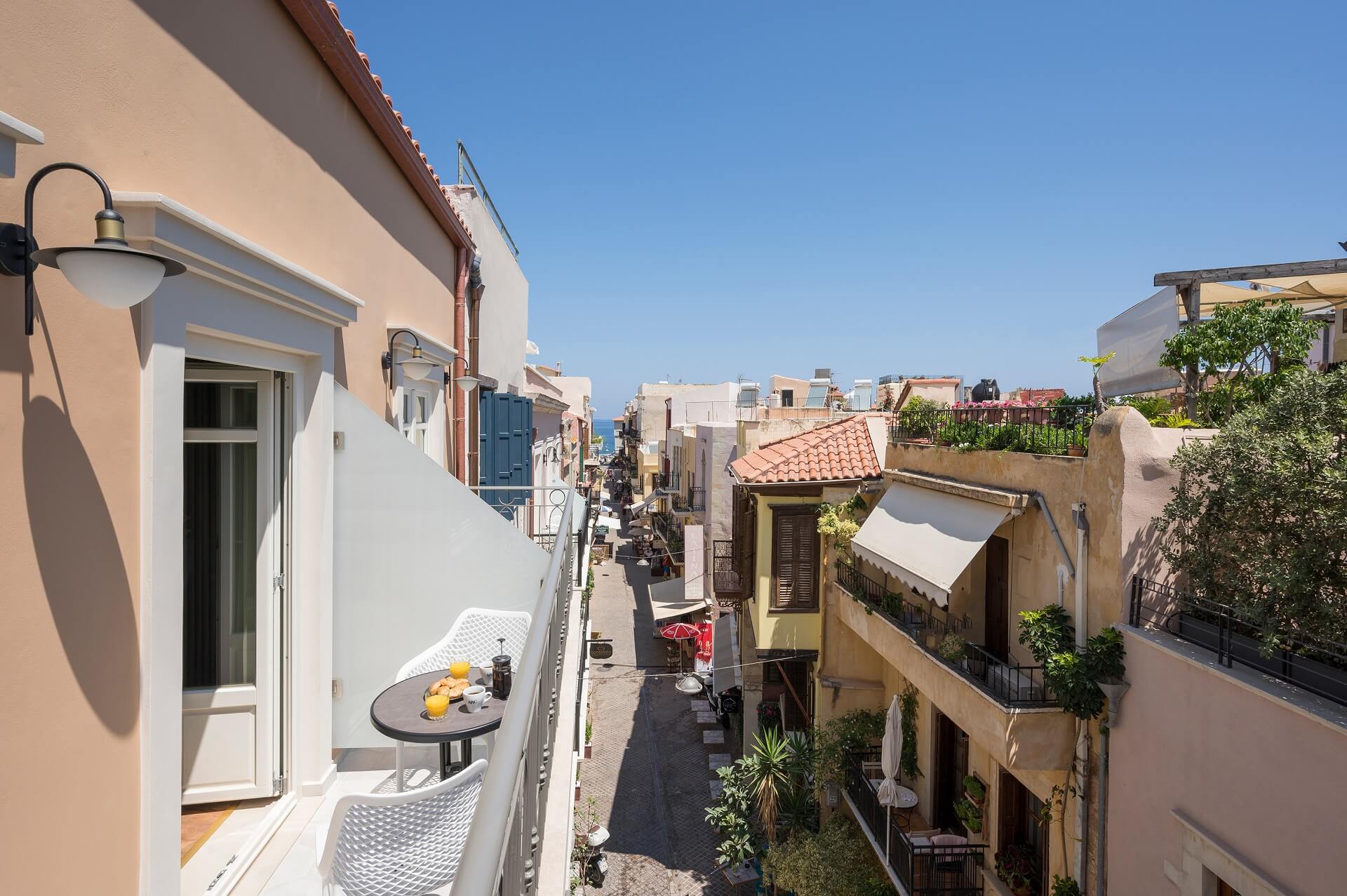Location
Outside the suites’ walls and gazing over the Old Town’s skyline, you immediately realize you are one with a city that endured and thrived throughout the centuries as well as being heavily influenced by Venetians, Egyptians and Ottomans. The hotel’s neighborhood is evidently historical, counting centuries of enduring existence, complementing the entire Old Town of Chania which is a living, breathing, growing monument.
This part of the Old Town was once called Topanas from the Turkish name Top-Hane (the place with the balls) referring to the cannon balls that they used to make for the fort.After the Turkish occupation in 1645, the Greek population of the then city that was enclosed by the Venetian walls was abruptly moved to the northwestern part.
This part of the Old Town was once called Topanas from the Turkish name Top-Hane (the place with the balls) referring to the cannon balls that they used to make for the fort.After the Turkish occupation in 1645, the Greek population of the then city that was enclosed by the Venetian walls was abruptly moved to the northwestern part.
Topanas was considered the aristocratic Christian quarters of old Chania and is adjacent to the Jewish quarters.A walk through the serpentine alleys will captivate and intrigue you. A 2’ walk will lead you to the Marine museum of Crete, the Firka fortress, the convent of San Salvatore housing the Byzantine collection and of course the breathtaking Venetian Harbor with its iconic Egyptian lighthouse.
The municipal parking is just around the corner as well as a bus stop connecting you with the rest of the modern city. The beach of Nea Chora is just 800m away and the route is flat, coastal and easy to walk to or ride a bike to.
The municipal parking is just around the corner as well as a bus stop connecting you with the rest of the modern city. The beach of Nea Chora is just 800m away and the route is flat, coastal and easy to walk to or ride a bike to.
